Oh no! What is this? Learn all about milk blisters right here
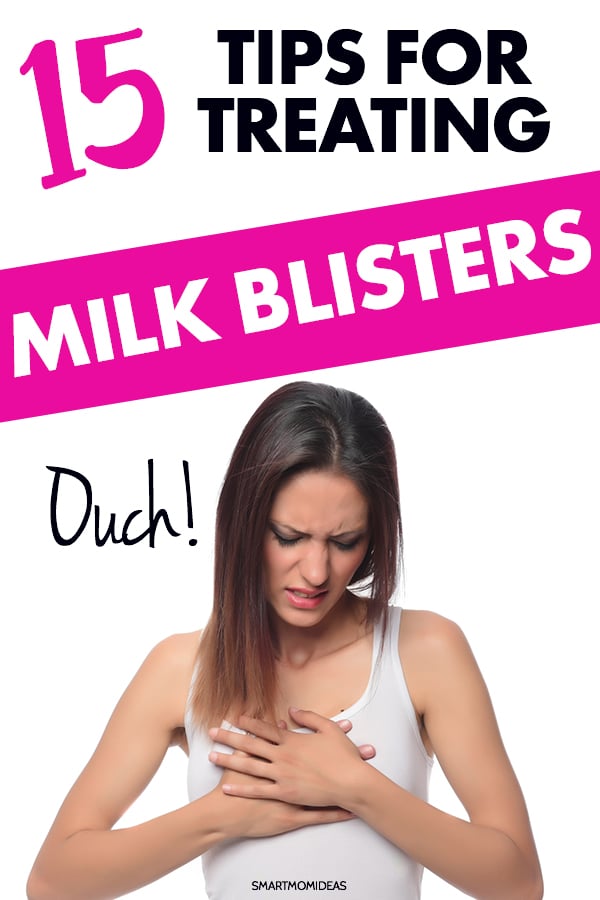
Congrats! You’ve mastered labor and delivery and now you’re on your way to breastfeeding your little one.
You’ve got all your supplies and you are finally finding a groove to on-demand feeding. But, then something happens and you get some discomfort when you breastfeed.
You make sure your little one has the perfect latch and still, it hurts when your baby breastfeeds.
If you find that you have no issues with your milk supply – in fact, you have an over supply – you may have developed a milk blister.
For more information, read on to find out what is a milk blister and how you can properly treat it.
What is a Milk Blister (Bleb)?
Also known as a nipple bleb, milk blister or “bulla”, a milk bleb is a fluid-filled blister caused by a blocked nipple pore.
While they can cause discomfort, they are not usually painful. When pain is experienced, it is usually focused on the blister and the area behind it.
They appear as white, clear or yellow dots on the nipple or areola. Size-wise, milk blebs are usually more than 55mm (or 2 inches) in diameter.
What Causes Milk Blisters?
Milk blisters are caused when skin grows over a milk duct opening and the milk backs up. This triggers an inflammatory response.
Despite being referred to as “blisters”, milk blisters are not caused by friction or rubbing.
Having an oversupply of milk, wearing tight clothes and bras and having latch issues can all contribute to the development of milk blebs. The presence of thrush (a yeast-related infection of the nipple) can also cause multiple blisters to form.
Even though milk blebs may last anywhere from days to weeks, they typically heal on their own. Thankfully, as they are healing, there are things you can do to help speed up the process and alleviate the discomfort.
How to Treat Milk Blebs
Milk blebs can be treated right at home with items you likely already own. Try these at-home treatments to alleviate the discomfort of the blister and speed up the healing process:
1. Apply moist heat prior to nursing.
Soak a face cloth in hot, but not scalding, water and wring out before placing on your breast and nipple. This will help to soften the blister.
2. Clear the skin from the milk duct.
This has to be done very gently but may help to drain the milk bleb. Rub the area with a moist washcloth or loosen the edge of the blister (gently!!!) with your fingernail. Do not push into the blister.
3. Pump or hand express some milk or perform breast compressions.
This may help to release thickened milk and alleviate the bleb. Some moms try nursing their child with the breast pointing down toward their little one while massaging the breast firmly with their knuckles. Encouraging milk flow can help move the blockage and eliminate the blister.
4. Soak the milk bleb in saline 4 times a day.
Mix 2 tsp of Epsom salt and 1 cup of hot water until dissolved. Wait until the water cools to a warm temperature. Soak a cotton ball in the mixture and place on the milk blister.
5. Talk to your doctor about taking Lecithin supplements.
These supplements are a form of antibiotic that can help to decrease repetitive milk blebs. The recommended dosage is 1 tablespoon of liquid Lecithin per day or 1 1200mg capsule 3 to 4 times a day.
6. Massage your breast, areola and nipple with grapefruit seed extract oil.
The grapefruit seed has healing properties and you can make own. Simply mix grapefruit seed extract with warm olive oil.
7. Or you can try a grapefruit seed extract spray.
Mix 5 drops of the extract, ¼ cup white vinegar and 2 cups of water in a spray bottle. Spray your nipples and breasts once a day.
8. Apply a tiny amount of vitamin E ointment directly onto the milk blister.
Just be sure to wipe it off before nursing your little one. Too much vitamin E oil can make your baby sick.
9. Use ice packs on your breasts between feedings to relieve discomfort.
A cold compress will help to reduce swelling and inflammation. Cold compresses work by reducing blood flow to the area to reduce pain.
10. Over-the-counter pain relievers such as Tylenol and Advil can also help alleviate the pain.
Please talk to your doctor first to make sure you are taking an appropriate medication. Both are considered safe for breastfeeding moms, but any medication should be cleared with your doctor first.
11. Soak a cotton ball in olive oil and place on the mill bleb.
Put on a bra and allow the skin around the milk blister to soften. This may aid in clearing away the skin from the blocked pore.
12. Continue breastfeeding.
You want to make sure you maintain your milk supply but breastfeeding can help to dislodge the milk bleb. Even though doing so may be painful, it’s important to continue nursing despite the blisters.
13. Place cold cabbage leaves on your breasts.
Some mothers prefer this method to a cold compress – maybe because the cabbage leaf conforms better to the shape of the breast. Wash the cabbage leaves before chilling them in the fridge. Place the leaf on your breast between feedings to provide relief and reduce swelling.
14. Invest in some breast shells.
These pieces are designed to protect your nipples from rubbing as well as collect leaked milk. Breast shells are made of silicone or plastic and come in 2 pieces. The first piece allows the nipple and areola to poke through hole while the second piece fits over top to protect the nipple and collect milk.
15. Correct any latch issues.
Sometimes when a baby’s latch is too shallow, it can place too much pressure on a particular point on the breast. This pressure can easily lead to a milk bleb. If you are struggling to establish a proper latch, contact your your local chapter of La Leche League – this is a group of experienced breastfeeding consultants that can guide you through the process of getting a proper latch.
When to See a Doctor
If the milk bleb remains painful and does not clear on its own within a few weeks, it may be time to see your doctor. He or she may have to drain the blister with a sterile needle. Also see your doctor if you experience a rash, fever, swelling, redness or infection.
Preventing Milk Blisters
Even though milk blisters are fairly easy to treat, they are no fun to have. Fortunately, there are a few things you can do to prevent experiencing uncomfortable milk blebs while nursing your child:
- Get your latch on: Work on getting a proper latch from day one and you’ll avoid not only milk blisters but other painful consequences of an improper latch. If your area does not have a local chapter of the La Leche League, speak to your doctor about getting help from a public health nurse or other professional.
- Drink plenty of fluids. Keeping yourself hydrated will ensure that your flow of milk remains steady and will not thicken. Thickened milk can cause a pore to block, which leads to those pesky blisters.
- Wear loose fitting clothes. Avoid bras with underwires and try to keep your shirts loose and roomy. Nursing bras as specially designed to properly support your breast while nursing but large sports bras will work as well.
Breastfeeding is a beautiful experience but can sometimes be hindered by annoying blisters. However, don’t let milk blebs get in the way of nursing your child, even if you are having problems with breastfeeding.
Keep nursing your little one while using these easy treatments and practicing preventative care.
Over to you – have you had a milk blister before? What worked the best to cure it? Share in the comments
Please remember to pin me!
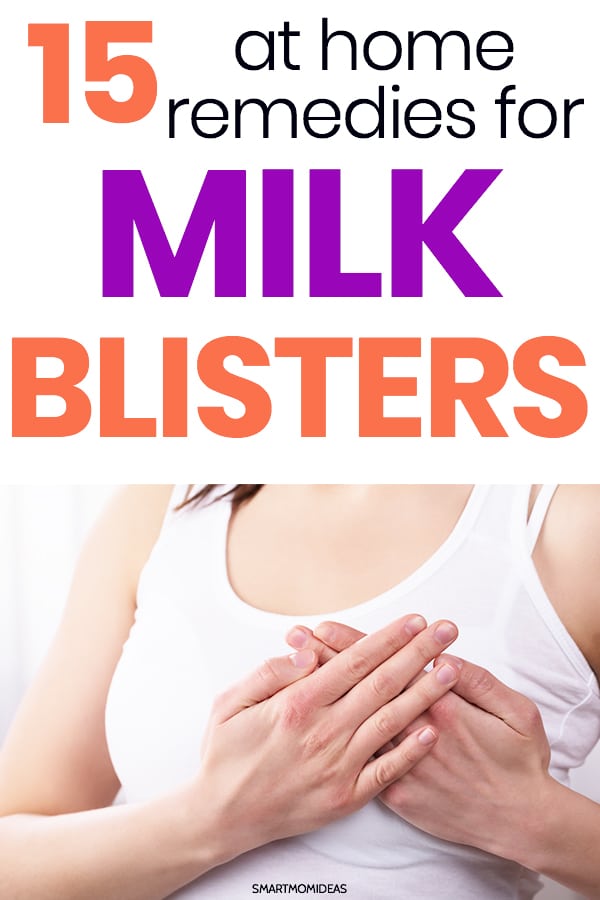

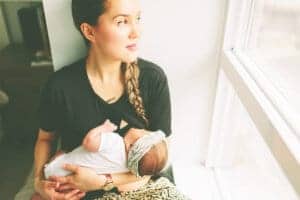
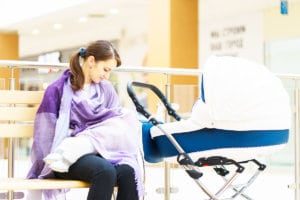
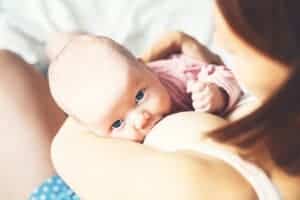
Leave a Reply